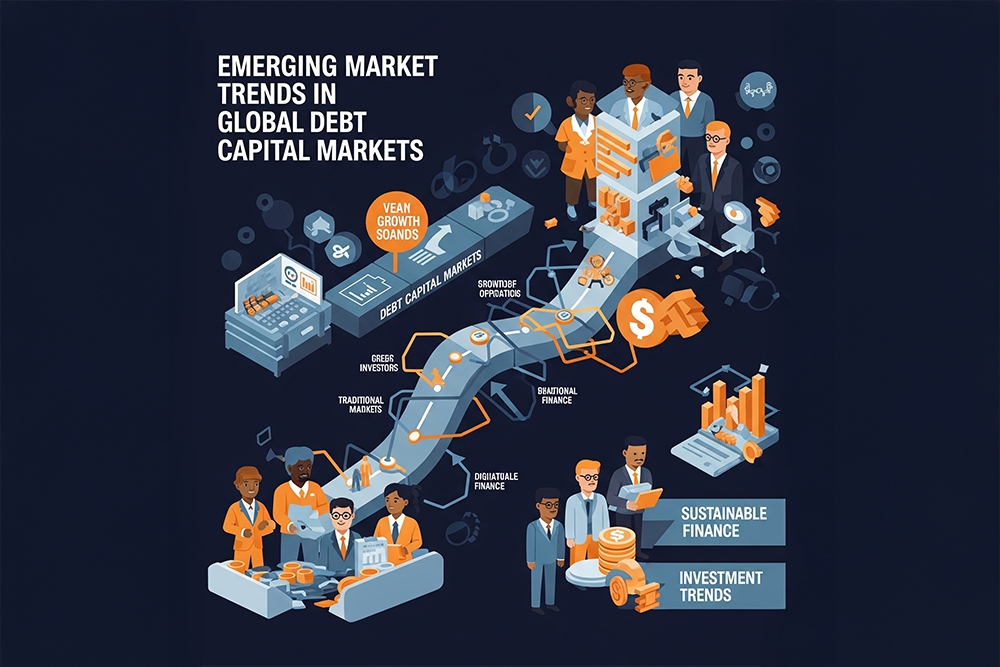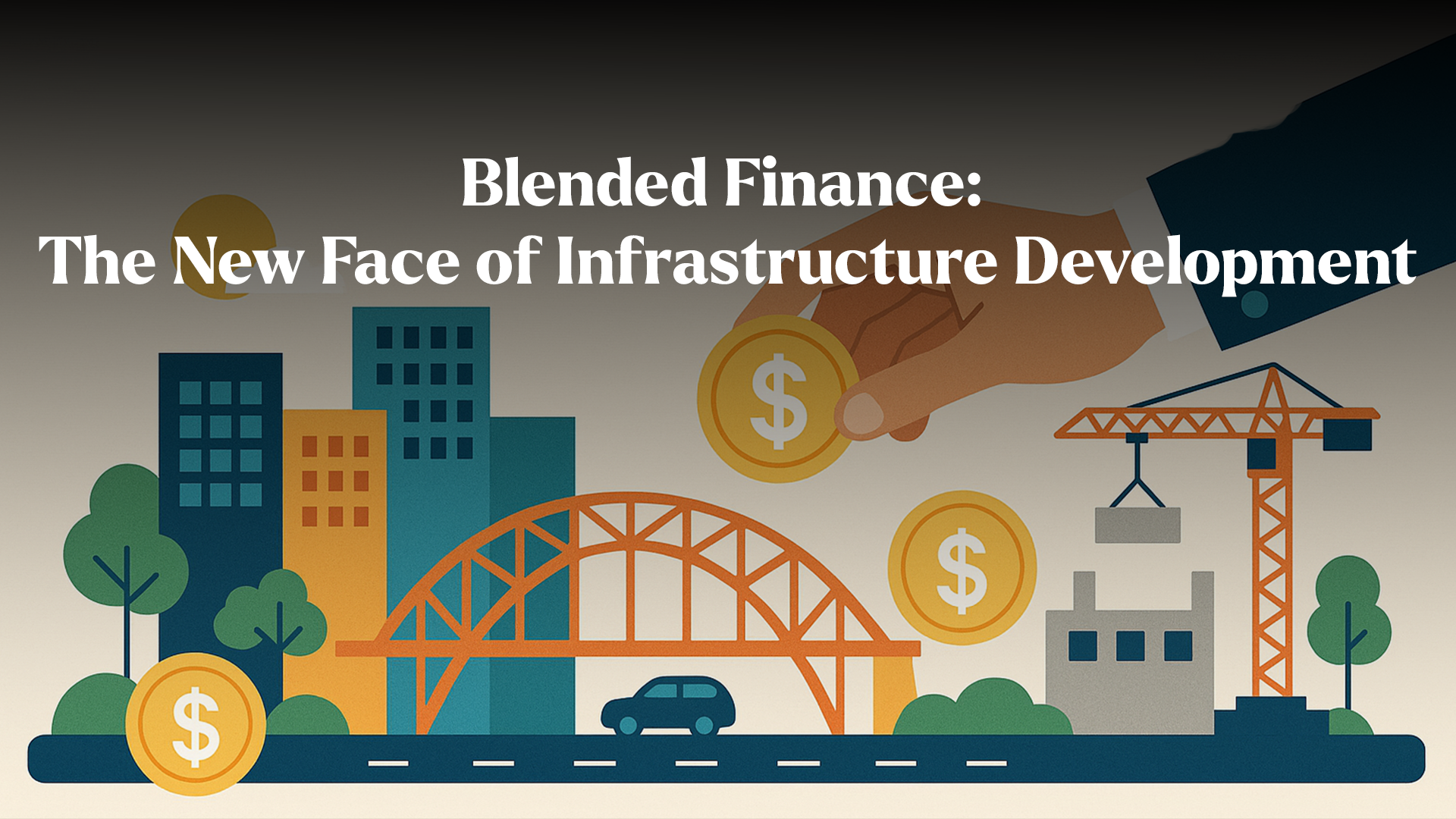The global financial landscape is constantly evolving, and nowhere is this dynamism more apparent than in Emerging Market (EM) Debt Capital Markets. For deal practitioners, understanding these shifts isn't just an advantage—it's a necessity. At Global Banking & Markets (GBM), we believe in empowering our community with the latest insights to accelerate transactions and navigate complexity.
So, what are the critical trends shaping EM debt, and what should you be focusing on in this exciting space?
The Resilient Rise of Emerging Market Debt
Emerging Markets encompass diverse economies, typically characterised by rapid economic growth and industrialisation. Their Debt Capital Markets provide a crucial avenue for governments and corporations to secure long-term funding through instruments such as bonds and other securities.
A significant trend observed in 2024 and continuing into 2025 is the surge in global debt, with EM debt approaching a staggering $105 trillion. While government borrowing is a key driver, this expansion signals the growing sophistication and integration of EM economies into the global financial system. Despite rising interest expenses in developed economies, many EM central banks have managed their monetary policies prudently, leading to comparatively high real yields.
Key Factors Driving the Momentum
Several interwoven factors are propelling these trends:
- Macroeconomic Resilience: Many emerging economies show robust GDP growth, improving fiscal positions, and more stable inflation rates compared to historical periods. This fundamental strength underpins investor confidence.
- Geopolitical Realignments: While geopolitical tensions can introduce volatility, they also create opportunities. Shifts in global trade patterns, supply chain diversification, and a potential balancing of capital flows can direct investment towards attractive EM assets.
- Technological Transformation: Digitalisation is revolutionising debt markets. Blockchain offers enhanced transparency and efficiency, potentially leading to fractional ownership and increased liquidity for EM bonds. Artificial Intelligence (AI) transforms risk management, data analysis, and even credit scoring, enabling financial inclusion in underserved EM populations. However, the lack of standardisation remains a hurdle for full digital integration.

Diversifying Instruments and Prominent Issuers
The EM debt market offers a rich tapestry of instruments and issuers:
- Sovereign Debt: National governments remain prominent issuers. Countries like Mexico, Indonesia, Chile, Brazil, South Africa, and Poland are significant players.
- Corporate Debt: This segment is growing. Notable EM corporate bond issuers include PROSUS NV, OCP SA, TEVA PHARMACEUTICAL FINANCE NETHERLANDS III BV, and Saudi Arabian Oil Co. (ARAMCO).
- Thematic Bonds: Bonds, Loans & ESG Investment: The rise of Bonds, Loans & ESG Investment (Green, Social, Sustainability, and Sustainability-Linked bonds) is a transformative trend, with issuance projected to reach $1.5 trillion by year-end. Investors increasingly prioritise environmental, social, and governance factors, driving innovation in financing structures.
Shifting Investor Sentiments and Capital Flows
Investor sentiment towards EM debt is showing signs of a "great rotation." With attractive valuations, improving fundamentals, and a potentially weakening U.S. dollar, capital flows are increasingly reallocating towards emerging markets. This includes both local repatriations and foreign investor re-entry. Dedicated EM funds, which experienced outflows since 2022, are now seeing renewed interest, indicating a potential catalyst for further performance. Investors are seeking higher yields and diversification, driving participation from mutual funds, ETFs, and institutional players.
Navigating Risks and Challenges
Despite the positive outlook, the EM debt landscape isn't without its complexities:
- Debt Sustainability: Rapid increases in debt levels and rising interest expenses pose risks, especially for countries with weaker fiscal positions. Significant debt amortisations due in 2025 and 2026 highlight potential liquidity challenges.
- Currency Volatility: Fluctuations in global currencies, particularly the U.S. dollar, can significantly impact the value of EM debt.
- Credit Risk: The possibility of issuer default remains a concern, making thorough credit analysis crucial.
- Geopolitical Volatility: Ongoing trade tensions, regional conflicts, and political uncertainties can create market instability.
Policy Responses and Reform Initiatives
Emerging market governments, in conjunction with international financial institutions like the IMF and World Bank, are actively implementing policy responses and reform initiatives:
- Fiscal Prudence and Structural Reforms: Many EMs are focusing on strengthening public finances through fiscal reforms, enhancing transparency, and promoting growth-oriented structural reforms.
- Debt Management Frameworks: Initiatives like the G20 Common Framework for Debt Treatments aim to provide a coordinated approach to debt restructuring, though implementation challenges persist.
- Capacity Building: The IMF and World Bank provide technical assistance and advisory support to improve public debt transparency and management frameworks in EMDEs.
- Financial Sector Development: Programs like the World Bank's FIRST Initiative support the deepening of domestic capital markets and fostering prudent risk-taking within local banking sectors.
The Outlook: A Turning Point for EM Debt?
Expert analyses suggest that EM debt may be at a turning point. Attractive valuations, improving fundamentals, and a shifting global macro environment point towards a potentially bullish outlook. A weakening U.S. dollar and the prospect of EM central banks easing monetary policy could fuel a resurgence in local currency debt, offering compelling opportunities for investors. The continued growth in Bonds, Loans & ESG Investment will also shape the market, as sustainability becomes increasingly embedded in investment decisions.
Conclusion
The emerging market debt capital markets are a dynamic and increasingly attractive segment of the global financial system. While challenges remain, the underlying macroeconomic resilience, coupled with evolving policy responses and the transformative impact of technology, presents a compelling narrative for growth and opportunity. Staying informed and connected with the right practitioners is paramount for success.
Accelerate Your Next Deal with Global Banking & Markets!
At Global Banking & Markets (GBM), we understand the complexities and opportunities in the ever-evolving financial landscape. Our networking events, including our highly anticipated M&A and Bonds, Loans & ESG Investment events, are meticulously designed to bring together the most relevant deal practitioners. We provide streamlined meetings and unparalleled networking opportunities that genuinely accelerate transactions. Don't just follow the trends—shape them. Join the GBM community and unlock your next big deal. Visit our website to learn more about our upcoming events and how we can help you thrive in global debt capital markets.
We are the world leader in global markets-focused financing events in emerging markets. We bring complex markets together in one place at one time, facilitate informal networking & organise meetings which accelerate deal-flow. Connecting you with business partners and counterparties is at the heart of everything we do.
.png)



